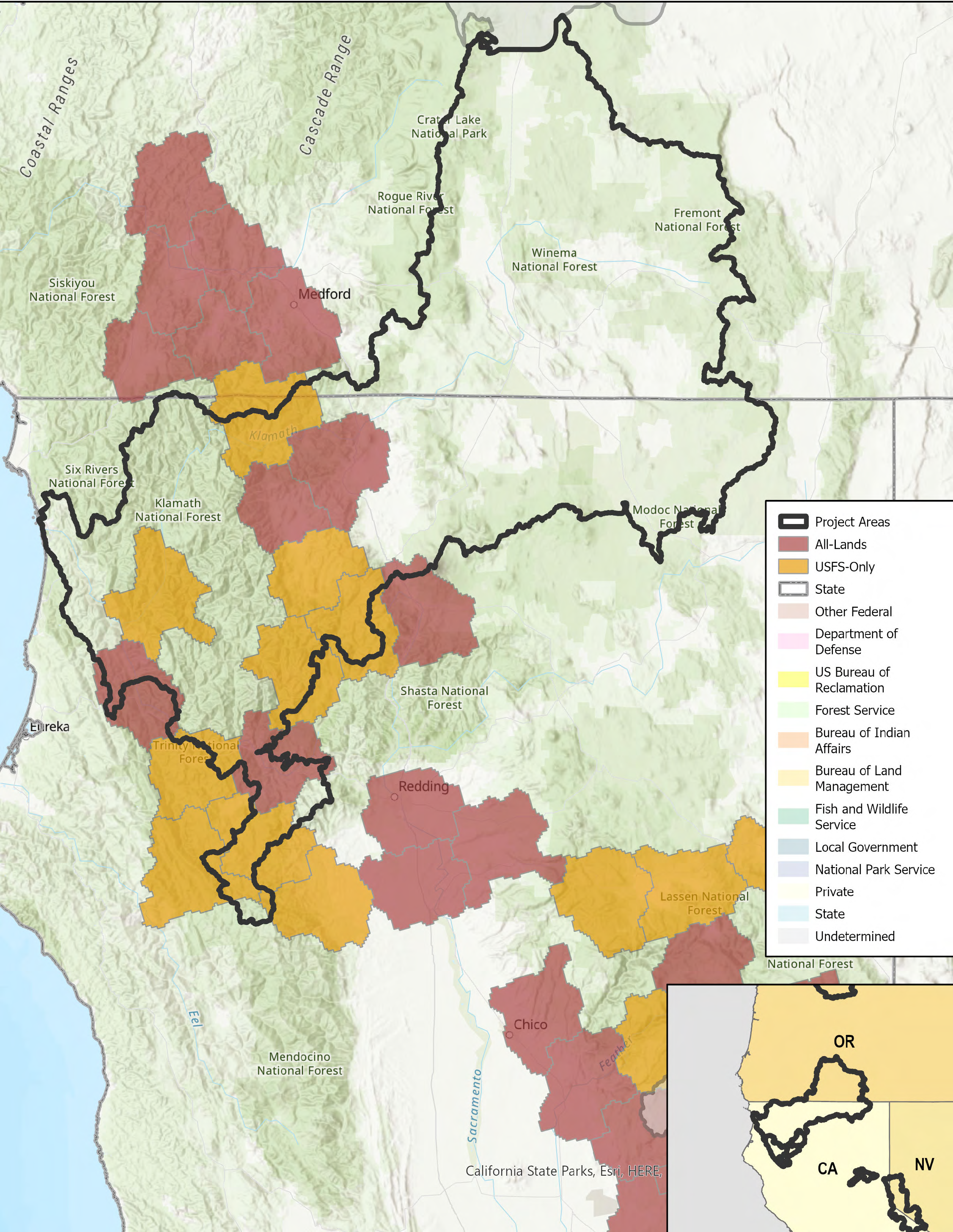Klamath River Basin
Forest Service Region: Pacific Southwest and Pacific Northwest
National Forests: Modoc, Klamath, Six Rivers, Shasta-Trinity, and Fremont-Winema National Forests
States: California and Oregon
Landscape Size: 10 million acres
Tribal Connections: Klamath Tribes; Karuk Tribe; Yurok Tribe; Hoopa Valley Tribe; Quartz Valley Indian Reservation; Resighini Rancheria; Pit River Tribe; Shasta Indian Nation; Modoc Nation
Partners: U.S. Fish and Wildlife Service; National Park Service; USDA Natural Resources Conservation Service; National Marine Fisheries Service; Oregon Department of Forestry; California Department of Forestry and Fire Protection; California Climate Investment Program; Western Klamath Restoration Partnership; Mid-Klamath Watershed Council; Klamath Lake Forest Health Partnership; community of Chiloquin; National Wild Turkey Federation
Congressional Districts: CA-1 and CA-2; OR-2
Expected Completion of Initial Treatments: FYs 2023—31
Expected Funding, FY 2023: $35,400,000
Landscape Highlights
At the Forest Service, we manage about 55 percent of the 10-million-acre Klamath Basin. These lands generate 80 percent of the mean annual surface water supply to the Klamath River. The area provides important habitat for fish listed under the Endangered Species Act. Fish like steelhead, salmon, and suckers are vital to the culture and well-being of Tribes in the Klamath Basin. Following the planned removal of four dams on the Klamath River, National Forest System lands will provide habitat for fish that have been excluded from the upper basin.
For several decades, Federal, State, and other partners have warned that the Klamath Basin is in critical need of restoration. Catastrophic wildfires have damaged or degraded ecosystems and communities across five national forests in the Klamath Basin, a trend that is likely to continue as the climate becomes hotter and drier. The effects of a changing climate on hydrology and wildfire activity are degrading fish habitat, including contributing to habitat loss through postfire landslides. Many affected communities are in rural counties with some of the lowest median incomes in their respective States.
Mechanism for Execution
We will invest in projects in collaboration with Tribes and other partners. We will explore opportunities for new agreements to work with our Tribal, Federal, State, and other partners. We will also use innovative stewardship contracts, such as the Blue Mile G-Z Stewardship integrated resource service contract on the Fremont-Winema National Forest.
Expected Outcomes
In addition to reduced wildfire exposure and risk for communities within the Klamath Basin, we will improve watershed conditions and salmonid habitats in the face of climate change. These improvements will support underserved communities and local economies.
We will treat up to 52,080 acres in FY 2023: 37,510 in California and 14,570 in Oregon. At least 217,000 acres will be treated through FYs 2023–31. In addition to investments identified with announcing this landscape, our goal is to attract another $15 million in partner contributions.


